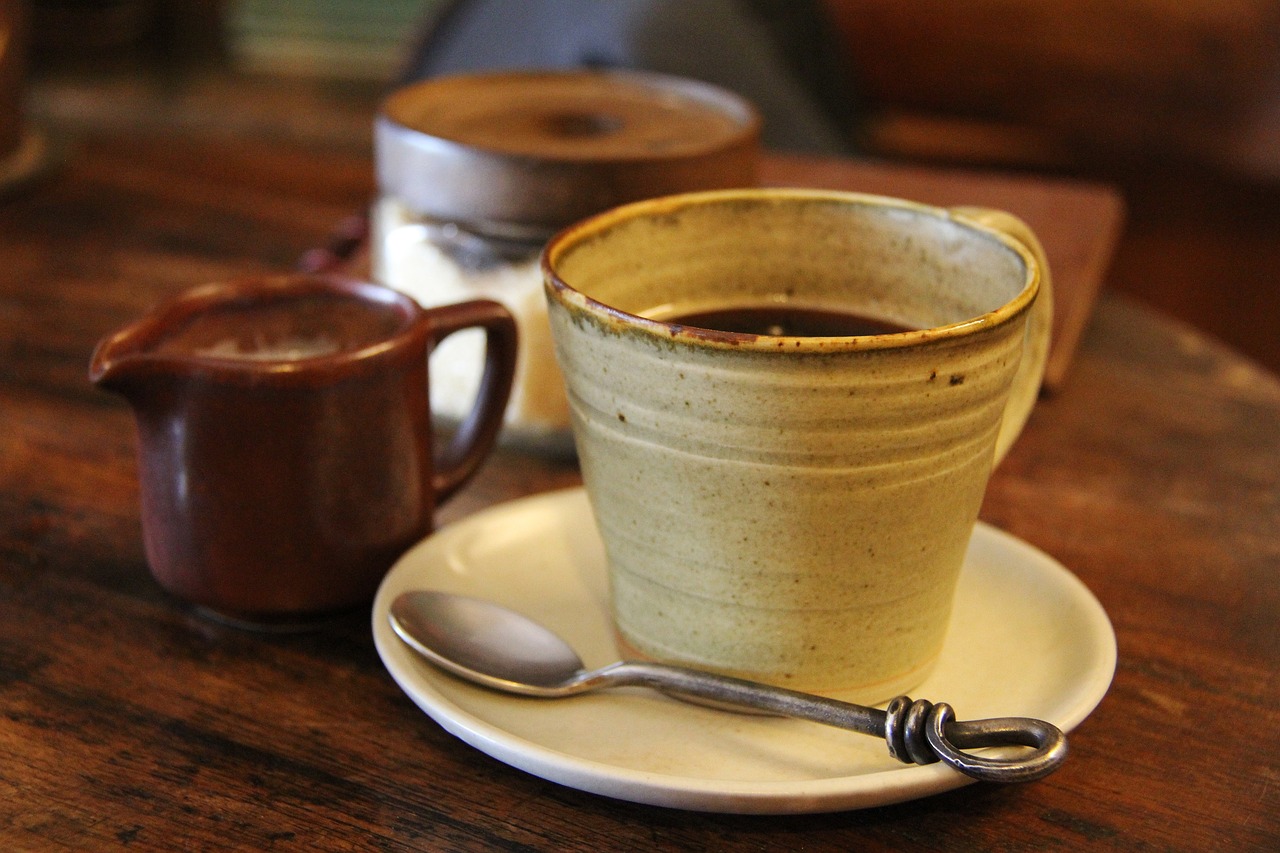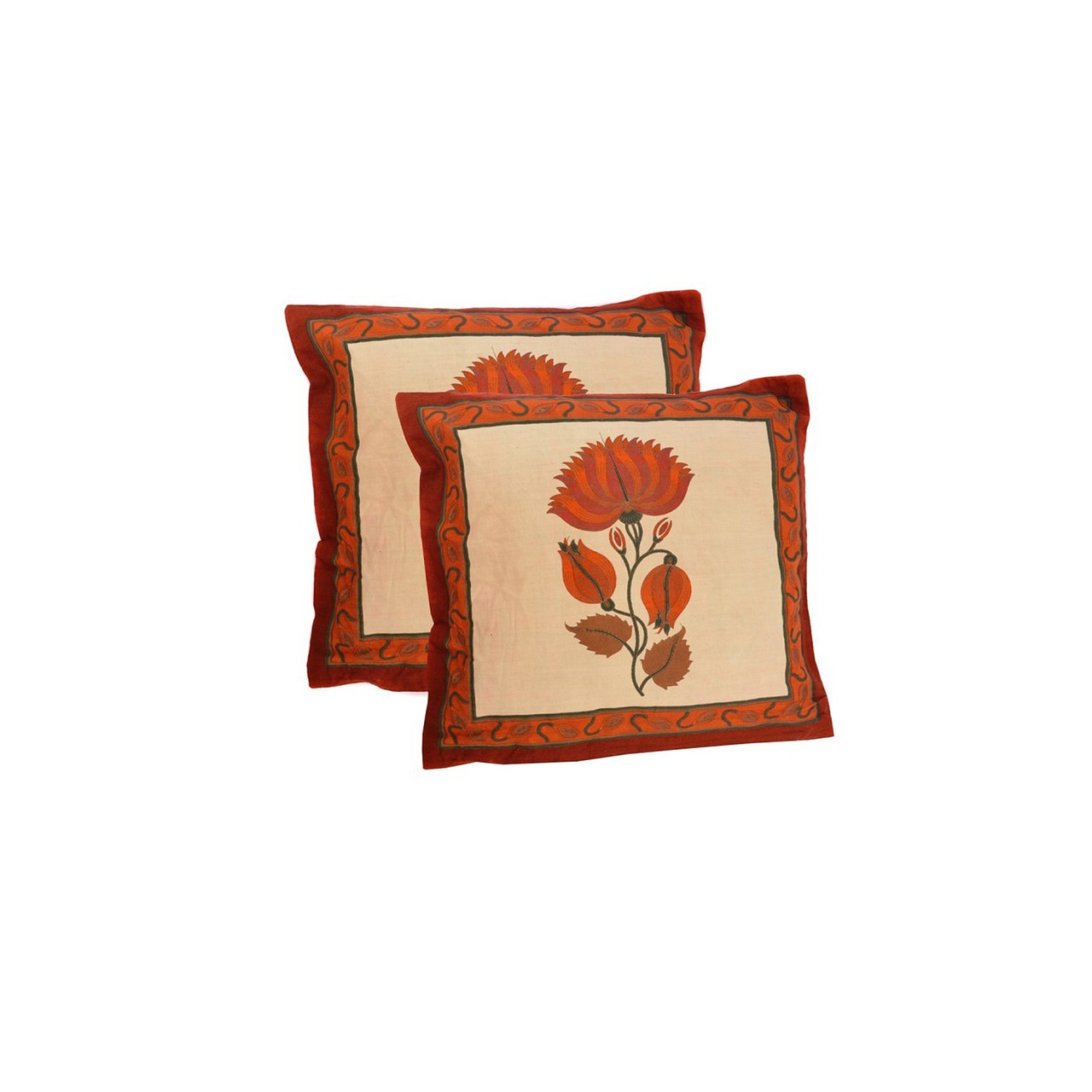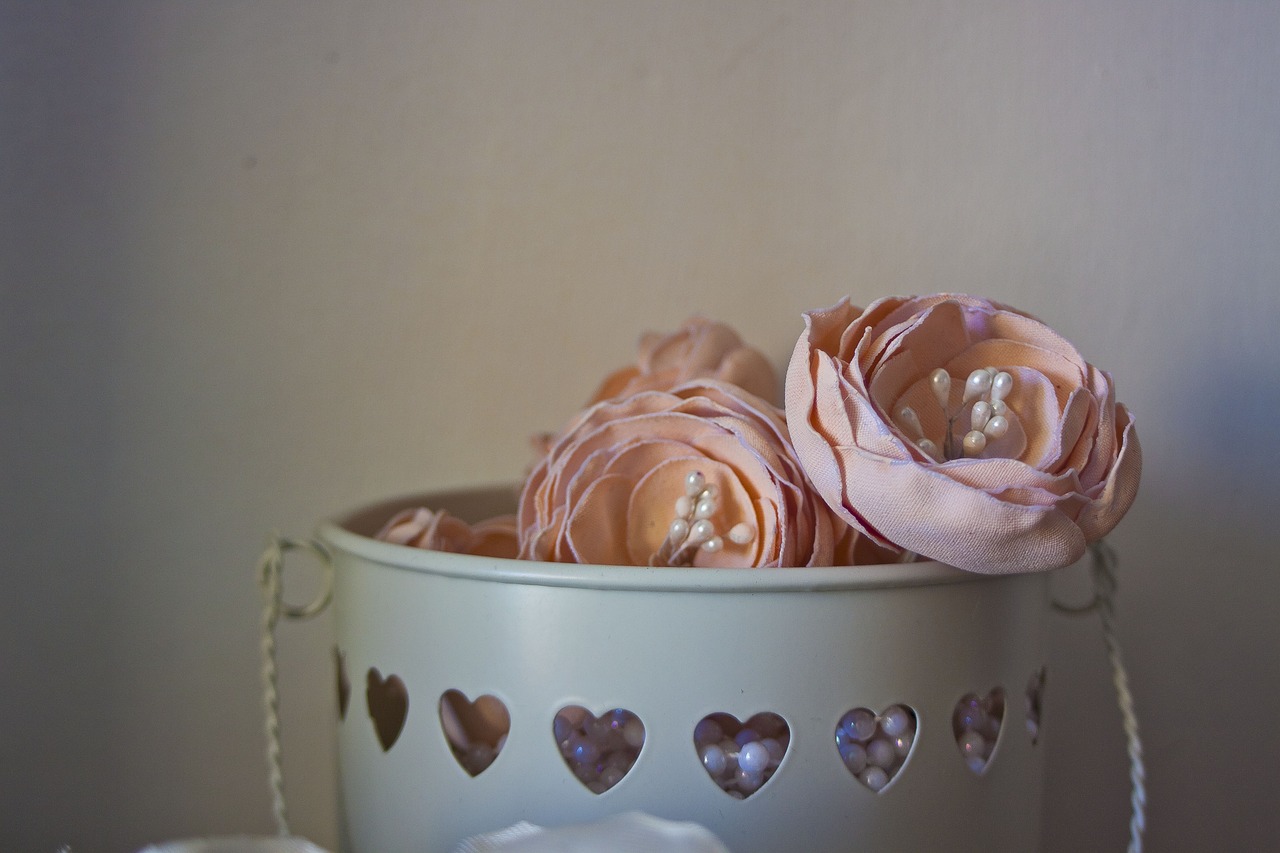DIY Decor Ideas to Brighten Your Outdoor Spaces
Are you tired of staring at a dull outdoor area that lacks personality and charm? Well, you're in luck! With just a pinch of creativity and a sprinkle of effort, you can transform your outdoor spaces into vibrant havens perfect for relaxation and entertainment. Whether you have a sprawling garden or a compact balcony, there are countless DIY decor ideas that can breathe new life into your surroundings. Imagine sipping your morning coffee surrounded by colorful flowers in upcycled planters, or hosting evening gatherings under twinkling fairy lights. Let's dive into some exciting projects that will not only enhance the beauty of your outdoor areas but also make them feel like an extension of your home.
One of the most delightful ways to add character to your garden is by creating upcycled planters. Think about those old tires, wooden crates, or even tin cans that are taking up space in your garage. Instead of tossing them out, why not transform them into unique planters? You can paint them in vibrant colors or wrap them in twine for a rustic look. Here are a few ideas to get you started:
- Old wooden pallets can be transformed into vertical planters, perfect for herbs or small flowers.
- Repurpose an old wheelbarrow as a charming planter by filling it with soil and your favorite blooms.
- Use glass jars or bottles to create hanging planters that add a whimsical touch to your patio.
By upcycling, not only do you save money, but you also contribute to a more sustainable lifestyle while showcasing your creativity.
As the sun sets, your outdoor space can come alive with the right lighting. DIY outdoor lighting solutions can create a warm and inviting ambiance that’s perfect for evening gatherings. From fairy lights draped across trees to lanterns lining your pathways, the options are endless. Consider using solar-powered lights for an eco-friendly touch. You can also make your own lanterns using mason jars filled with candles or LED lights. Picture this: a warm summer night, soft lighting, and laughter echoing through the air. Sounds inviting, right?
What better way to express your personality than through vibrant garden art? Incorporating colorful sculptures, paintings, or mosaics can truly transform your outdoor space. You can create your own art by painting rocks, making wind chimes from recycled materials, or even crafting a mosaic table. Not only does this add a splash of color, but it also serves as a conversation starter. Imagine your guests admiring a stunning, hand-painted birdbath or a quirky garden gnome that reflects your unique style!
Creating inviting outdoor seating arrangements is essential for enjoying your outdoor oasis. You don’t need to spend a fortune on new furniture; instead, consider refurbishing old pieces. A simple coat of paint can work wonders on a tired bench or chairs. Alternatively, you can build your own seating using pallets or logs for a rustic look. Add some colorful cushions for comfort and style. Picture yourself lounging with a good book or hosting friends for a barbecue, all while nestled in a cozy seating area that feels just like home.
Designing beautiful pathways using natural materials can guide visitors through your garden while enhancing its aesthetic appeal. Think about using stones, gravel, or even wood slices to create charming trails. Not only do pathways add structure, but they also invite exploration. Imagine walking through a garden where each step leads to a new surprise, whether it's a blooming flower or a hidden seating nook. Creating these pathways can be a fun project that adds both function and beauty to your outdoor space.
Embrace the changing seasons with DIY decor that reflects nature's beauty. You can easily switch up your outdoor decor throughout the year to keep things fresh and exciting. For example, in the fall, consider adding pumpkins and gourds, while spring can bring vibrant flowers and pastel colors. This not only keeps your outdoor space looking lively but also allows you to engage with the changing environment. Plus, it’s a fun way to celebrate holidays and seasonal festivities!
If you're short on space but long on love for plants, vertical gardening is your answer! This innovative approach maximizes space while adding greenery to your outdoor area. You can create stunning vertical planters using wooden pallets, trellises, or even hanging shoe organizers. These vertical gardens not only save space but also serve as eye-catching decor. Imagine a wall of lush plants that not only beautifies your space but also provides fresh herbs or flowers for your home.
Nothing says cozy like gathering around a fire pit on a cool evening. Building your own DIY fire pit can create a central gathering spot for friends and family. You can choose from various designs, whether you prefer a stone circle or a simple metal fire bowl. Just be sure to follow safety guidelines to ensure a safe and enjoyable experience. Picture roasting marshmallows, sharing stories, and enjoying the warmth of the fire while the stars twinkle above – it’s the perfect way to enhance your outdoor experience!
Make your outdoor space feel like home with personalized welcome signs. These signs can reflect your personality and invite guests into your space. You can create a sign using reclaimed wood, paint, or even a simple stencil. Consider adding your family name or a fun phrase that represents your home. A personalized welcome sign not only adds charm but also sets the tone for the warm hospitality that awaits your guests.
Q: What are some budget-friendly materials for DIY outdoor decor?
A: You can use items like reclaimed wood, old furniture, tin cans, and even natural materials like stones and branches. The possibilities are endless!
Q: How do I maintain my DIY outdoor decor?
A: Regular cleaning and occasional touch-ups will keep your decor looking fresh. For items exposed to the elements, consider using weather-resistant materials or finishes.
Q: Can I incorporate my DIY decor ideas into a small outdoor space?
A: Absolutely! Many of these ideas, like vertical gardens and cozy seating, are perfect for small spaces. Just think creatively about how to maximize your area!

Upcycled Planters
Are you tired of the same old planters cluttering your garden? Why not give your outdoor space a fresh twist with ? Transforming everyday items into unique planters not only adds character to your garden but also contributes to a more sustainable lifestyle. Imagine turning an old wooden crate or a discarded tire into a vibrant home for your favorite flowers or herbs. It’s like giving new life to forgotten treasures!
One of the best things about upcycling is that it allows you to express your creativity. You can paint, decorate, or even add embellishments to your planters, making them truly one-of-a-kind. For instance, old teacups can be painted in bright colors, creating charming little homes for succulents. Or, if you have a broken ladder, consider using it as a vertical planter by placing pots on each step—this not only saves space but also creates a stunning visual display.
Here are a few ideas to get your creative juices flowing:
- Old Boots: Give those worn-out shoes a second chance by filling them with soil and planting colorful flowers. They add a quirky touch to your garden.
- Wine Crates: These rustic crates can be stacked or placed side by side to create a beautiful planter that’s perfect for herbs or small vegetables.
- Colanders: An old colander can serve as a unique planter with excellent drainage. Just hang it on a wall or place it on a table.
Not only do upcycled planters enhance the aesthetic of your garden, but they also promote environmental sustainability. By reusing materials, you reduce waste and contribute to a healthier planet. Plus, they can be a fun weekend project for you and your family. Gather your supplies, put on some music, and let the creativity flow! The result will be a garden that reflects your personality and values.
Remember, the key to successful upcycling is to think outside the box. Almost anything can become a planter with a little imagination and effort. So, the next time you’re about to toss something out, ask yourself: Can this be transformed into a planter? You might be surprised by the possibilities!

Outdoor Lighting Solutions
When the sun dips below the horizon, your outdoor space can transform into a magical realm with the right lighting. Imagine hosting a cozy gathering with friends, surrounded by soft glows and twinkling lights. Outdoor lighting doesn't just illuminate; it creates an atmosphere that invites laughter and conversation. Whether you're looking to set a romantic mood or just want to light up your backyard for a fun barbecue, there are countless DIY lighting solutions that are both budget-friendly and stylish.
One of the simplest ways to enhance your outdoor ambiance is by using fairy lights. These delicate, twinkling strands can be draped over trees, wrapped around railings, or hung between posts to create a whimsical feel. To make them even more enchanting, consider placing them in mason jars or glass bottles for a charming glow. Not only do they add a touch of magic, but they can also be easily removed and stored during the off-season.
Another fantastic option is to create your own lanterns. You can use various materials such as paper, glass, or even tin cans. For a simple project, take an empty tin can, fill it with water, and freeze it overnight. Once frozen, remove the ice and use a hammer and nail to punch holes in the can, creating a design. Then, place a tealight candle inside, and voilà! You have an eye-catching lantern that casts beautiful patterns when lit.
For those who prefer a more permanent solution, consider installing solar lights. These eco-friendly options charge during the day and automatically illuminate at night, providing a reliable source of light without the hassle of wiring. You can find solar lights in various styles, from sleek and modern to rustic and charming. Arrange them along pathways, around flower beds, or near seating areas to create a warm and inviting atmosphere.
To take your outdoor lighting to the next level, think about integrating string lights into your decor. They can be hung overhead to create a canopy effect or draped along fences to outline your space. The warm glow of string lights can turn any outdoor area into a cozy retreat, perfect for late-night conversations or stargazing.
Incorporating lighting into your garden can also enhance the beauty of your plants. Consider using spotlights to highlight your favorite trees or flower beds. This not only adds depth to your garden but also creates a stunning focal point that draws the eye. You can choose from low-voltage or LED options, which are energy-efficient and long-lasting.
Lastly, don’t forget about candles. They can add an intimate touch to any outdoor setting. Use a variety of sizes and heights to create visual interest. Place them in safe holders to prevent any fire hazards, and consider using citronella candles to keep pesky bugs at bay while you enjoy your evening outdoors.
In summary, outdoor lighting solutions can dramatically enhance the look and feel of your outdoor space. From fairy lights to solar options, there’s something for every style and budget. So, why not get creative? Your outdoor oasis is waiting to shine!
- What are the best types of lighting for outdoor spaces? The best types of lighting include fairy lights, lanterns, solar lights, string lights, and spotlights, each offering unique benefits and aesthetics.
- How can I make my outdoor lighting more energy-efficient? Opt for solar-powered lights or LED options, which consume less energy and have longer lifespans compared to traditional bulbs.
- Are there any safety tips for using outdoor lighting? Always ensure that your lighting fixtures are rated for outdoor use, keep electrical connections dry, and use candle holders that are stable and non-flammable.

Colorful Garden Art
When it comes to transforming your garden into a vibrant sanctuary, is your secret weapon. Imagine stepping into your outdoor space and being greeted by a burst of colors that dance in the sunlight. It’s like bringing a piece of the rainbow right into your backyard! But how do you achieve this magical effect? Let’s dive into some exciting DIY art projects that will not only enhance the beauty of your garden but also reflect your personal style.
One of the best things about creating garden art is that you can use recycled materials to craft stunning pieces. Old bottles, cans, and even discarded furniture can be transformed into unique sculptures or decorative elements. For instance, you can paint old wooden pallets in bright hues and stack them to create a whimsical vertical garden. This not only adds color but also serves a purpose by showcasing your plants in a creative way.
Another fantastic idea is to create mosaic stepping stones. Gather some broken tiles, glass, or even colorful pebbles and set them into concrete molds. Once they’re dry, you’ll have beautiful, one-of-a-kind stones that lead guests through your garden. It’s a fun project that allows you to play with patterns and colors, turning a functional item into a piece of art!
Consider adding whimsical sculptures made from clay or metal. These can be anything from quirky animals to abstract forms that spark conversation. For example, a bright blue owl perched on a tree branch can serve as a delightful focal point. Not only do these sculptures add color, but they also infuse your garden with personality. Plus, you can often find materials at thrift stores or garage sales, keeping costs low while maximizing creativity.
Don’t forget about the power of paint! A simple coat of vibrant paint can breathe new life into old garden furniture. Think about repainting your chairs and tables in bold colors like sunny yellow or ocean blue. This not only creates a cohesive look but also invites people to sit and enjoy the beauty around them. Pair these with colorful cushions for added comfort and style.
To make your garden even more enchanting, consider incorporating hanging art. You can create colorful wind chimes using beads, shells, or even old utensils. As the wind blows, these pieces will create a beautiful symphony of sound and movement. Alternatively, hanging flower pots painted in vivid shades can add a three-dimensional element to your garden, drawing the eye upward and making the space feel larger.
In summary, colorful garden art is all about letting your creativity shine. Whether you choose to upcycle materials, paint existing items, or create new pieces from scratch, the goal is to express your unique style and make your outdoor space a joyful retreat. So grab your paintbrushes, gather some materials, and let your imagination run wild. Your garden is a blank canvas waiting for your artistic touch!
- What materials can I use for DIY garden art?
You can use a wide range of materials including recycled items like bottles, cans, wood, and even old furniture. - How can I ensure my garden art withstands the weather?
Using weather-resistant paints and sealants can help protect your creations from the elements. - Can I involve my kids in making garden art?
Absolutely! DIY garden art projects can be a fun and educational activity for the whole family.

Cozy Seating Areas
When it comes to transforming your outdoor spaces into inviting retreats, creating cozy seating areas is a game changer. Imagine stepping outside and being greeted by a charming nook that beckons you to sit down, relax, and enjoy the beauty of nature. Crafting your own seating arrangements doesn't have to be a daunting task; in fact, it can be a fun and rewarding DIY project that adds both comfort and style to your garden or patio.
First off, think about the materials you want to use. You can go for rustic wooden benches, elegant wrought iron chairs, or even repurposed items like old pallets and crates. The beauty of DIY is that you can let your creativity run wild! For instance, an old wooden door can be transformed into a unique bench, while mismatched chairs can create a whimsical vibe. The key is to choose materials that not only suit your personal style but also complement the overall aesthetic of your outdoor space.
Once you’ve settled on your seating, it’s time to consider the layout. Position your seating to take advantage of the best views in your yard or garden. You might want to create a circle around a fire pit for those chilly evenings or arrange chairs in a semi-circle to foster conversation. Don't forget to add some soft cushions and throws to amp up the coziness factor. After all, who doesn’t love sinking into a plush seat with a warm blanket on a cool evening?
Incorporating elements like side tables can enhance the functionality of your seating area. They provide a perfect spot for your favorite drink or a good book. You can easily create your own side tables using leftover wood or even stackable crates for a more casual look. If you’re feeling adventurous, consider building a built-in seating area with storage underneath. This not only saves space but also keeps your outdoor essentials neatly tucked away.
Lighting plays a crucial role in creating a cozy atmosphere. String lights draped above your seating area can create a magical ambiance as the sun sets. You can also use lanterns or solar-powered lights to illuminate the space without the hassle of cords. Imagine gathering with friends under a twinkling canopy of lights, sharing stories and laughter—sounds delightful, right?
Lastly, don’t forget to add some greenery! Surround your seating area with potted plants or hanging planters to create a serene environment. Not only do plants enhance the aesthetic, but they also provide a sense of tranquility. You can even create a small herb garden nearby; nothing beats the aroma of fresh herbs wafting through the air while you enjoy your outdoor oasis.
In summary, your outdoor seating areas should be a reflection of your personality and style. With a little creativity and some DIY spirit, you can craft a cozy corner that invites relaxation and fosters connection with friends and family. So grab your tools, let your imagination soar, and start building the outdoor retreat of your dreams!
- What materials are best for outdoor seating? Look for weather-resistant materials like teak, cedar, or metal. You can also repurpose old furniture for a unique touch.
- How can I make my outdoor seating more comfortable? Add cushions and throws for warmth and comfort. Consider using outdoor fabrics that are resistant to fading and moisture.
- What are some budget-friendly options for outdoor seating? Repurposing pallets or using second-hand furniture can be a great way to save money while adding character to your space.
- How can I enhance the ambiance of my outdoor seating area? Incorporate lighting like string lights or lanterns, and surround the area with plants to create a cozy atmosphere.

Natural Pathways
Creating in your outdoor space is like weaving a thread of magic through your garden. Imagine stepping onto a well-defined trail that invites you to explore every nook and cranny of your vibrant landscape. Not only do these pathways add aesthetic value, but they also serve a practical purpose, guiding visitors through your outdoor haven. Whether you prefer a rustic look or something more modern, the beauty of natural materials can transform your garden into a serene escape.
One of the most appealing aspects of using natural materials for pathways is their ability to blend seamlessly with the surrounding environment. Think about using stones, gravel, or even wood chips to create a pathway that feels organic and welcoming. Each material has its unique charm and character, allowing you to customize your garden's look. For instance, a path lined with smooth river stones can evoke a tranquil riverbank, while a gravel path might remind you of a charming countryside retreat.
When planning your pathway, consider the following elements to enhance both functionality and beauty:
- Width: Ensure your path is wide enough for comfortable walking, especially if you anticipate hosting gatherings.
- Curves: Incorporating gentle curves can create a sense of mystery and encourage exploration.
- Surroundings: Choose plants and flowers that complement your pathway, adding bursts of color and fragrance as you stroll.
To get started, here’s a simple guide:
- Choose Your Materials: Select natural elements that resonate with your style. Consider local stones or reclaimed wood.
- Plan Your Layout: Sketch a rough design of your pathway, deciding where it will lead and how it will interact with existing landscaping.
- Prepare the Ground: Clear the area of weeds and debris, leveling the ground as necessary for a smooth finish.
- Install Your Pathway: Lay down your chosen materials, ensuring they are securely placed and evenly spaced.
- Add Finishing Touches: Incorporate edging stones or plants along the sides to define the path and enhance its visual appeal.
As you embark on this DIY journey, remember that your pathway can be a canvas for creativity. Consider adding features like stepping stones with painted designs or embedded mosaics that tell a story. Perhaps you could even integrate small lights along the edges to create a magical atmosphere at night. The possibilities are endless!
In conclusion, natural pathways are more than just a means to get from point A to point B; they are an invitation to connect with nature and enjoy the beauty of your outdoor space. So, roll up your sleeves, gather your materials, and let your creativity flow as you craft a pathway that reflects your personality and enhances the charm of your garden.
Q: What materials are best for creating natural pathways?
A: The best materials depend on your garden's style, but popular options include stones, gravel, wood chips, and pavers. Each offers unique aesthetics and functionality.
Q: How do I maintain my natural pathway?
A: Regular maintenance includes removing weeds, replenishing gravel or mulch, and ensuring stones are securely in place. This will keep your pathway looking fresh and inviting.
Q: Can I create a pathway in a small garden?
A: Absolutely! Even in small spaces, you can design a charming pathway. Consider using narrow materials and gentle curves to make the area feel larger.
Q: How do I incorporate lighting into my pathway?
A: You can add solar lights along the edges of your pathway or use lanterns to create a cozy atmosphere. This not only enhances safety but also adds a magical touch to your garden at night.

Seasonal Decor Themes
Embracing the changing seasons is a fantastic way to keep your outdoor space fresh and inviting. Think of your garden as a canvas that transforms with every season, creating a vibrant tapestry of colors, textures, and themes. From the blooming flowers of spring to the cozy hues of autumn, each season offers unique opportunities for DIY decor that reflects nature’s beauty. Why not take advantage of these seasonal shifts to add a personal touch to your outdoor oasis?
For spring, consider incorporating pastel colors and floral motifs. You can create charming decorations like painted flower pots or hang colorful bunting made from fabric scraps. The idea is to bring the essence of spring into your garden. You might even want to set up a small bird feeder adorned with flowers to attract local wildlife, adding life to your space. As summer rolls in, it’s time to switch gears. Bright colors and fun decorations like beach-themed ornaments or DIY tiki torches can create a festive atmosphere for summer gatherings.
As the leaves begin to change in autumn, embrace the warm tones of the season. Think about using pumpkins, gourds, and rustic elements like hay bales for a cozy feel. You can even create a stunning centerpiece for your outdoor table using these natural elements. A simple DIY project could involve painting pumpkins in various shades to match your decor. Finally, when winter arrives, it’s all about warmth and coziness. String lights can create a magical ambiance, while wreaths made from evergreen branches can add a touch of holiday spirit to your front door.
To help you get started, here’s a quick overview of seasonal decor ideas:
| Season | Decor Ideas |
|---|---|
| Spring | Pastel flower pots, colorful bunting, bird feeders |
| Summer | Bright ornaments, tiki torches, beach-themed decorations |
| Autumn | Pumpkins, hay bales, painted gourds |
| Winter | String lights, evergreen wreaths, cozy blankets |
Incorporating seasonal decor themes not only beautifies your outdoor space but also fosters a connection with nature. It’s like inviting the seasons into your home, creating a dynamic atmosphere that evolves throughout the year. So, roll up your sleeves and let your creativity run wild! Your outdoor space deserves to shine in every season.
- How often should I change my outdoor decor? It's ideal to refresh your decor with each season to keep your outdoor space vibrant and inviting.
- Can I use the same decorations for multiple seasons? Absolutely! Some items, like neutral planters or string lights, can transition beautifully between seasons.
- What materials are best for outdoor decorations? Opt for weather-resistant materials like treated wood, metal, or outdoor-safe fabrics to ensure longevity.

Vertical Gardens
Vertical gardens are a fantastic way to bring the beauty of nature into your home, especially if you're working with limited space. Imagine transforming a dull wall into a vibrant tapestry of greens and colors! Vertical gardening not only maximizes your growing area but also adds a stunning visual element to your outdoor spaces. Whether you have a small balcony or a spacious backyard, vertical gardens can fit seamlessly into any environment, creating a lush oasis that invites relaxation and admiration.
One of the most appealing aspects of vertical gardens is their versatility. You can use a variety of materials to create your own unique design. For instance, old pallets, wooden crates, or even repurposed plastic bottles can be transformed into eye-catching planters. The beauty of DIY vertical gardens lies in the freedom to express your creativity. You can mix and match different plants, colors, and textures to create a living work of art that reflects your personal style.
When starting your vertical garden, consider the following tips to ensure success:
- Choose the Right Location: Make sure your vertical garden receives adequate sunlight. Most plants thrive with at least 6 hours of sunlight daily.
- Select Suitable Plants: Opt for plants that are well-suited for vertical growth. Herbs, succulents, and trailing vines are excellent choices.
- Ensure Proper Drainage: Good drainage is crucial to prevent root rot. Make sure your planters have holes or use a drip irrigation system.
To inspire you further, here’s a simple step-by-step guide to creating your own vertical garden:
- Gather your materials: You’ll need a structure to hold your plants, such as a trellis or a wooden frame.
- Choose your plants based on the amount of sunlight and space you have.
- Prepare your soil and planters, ensuring they have proper drainage.
- Plant your chosen greenery, arranging them for aesthetic appeal.
- Water and maintain your vertical garden regularly to keep it thriving.
Vertical gardens also offer environmental benefits. They can help improve air quality, reduce heat, and even provide insulation for your home. By incorporating plants into your living space, you're not just beautifying your surroundings; you're also contributing to a healthier planet. Plus, the act of gardening itself can be therapeutic, offering a sense of accomplishment and a way to connect with nature.
In conclusion, vertical gardens are an innovative solution for anyone looking to enhance their outdoor spaces without taking up too much room. With a little creativity and effort, you can create a stunning vertical garden that adds life and color to your home. So, why not start your vertical gardening journey today? You'll be amazed at how much beauty you can cultivate in even the smallest of spaces!
Q: What types of plants work best in vertical gardens?
A: Plants that grow vertically, such as climbing vines, herbs, and succulents, are ideal. Consider using a mix of trailing plants and those with more upright growth habits for visual interest.
Q: Can I create a vertical garden indoors?
A: Absolutely! Many indoor plants thrive in vertical gardens. Just ensure they receive enough light, either from natural sunlight or grow lights.
Q: How do I maintain a vertical garden?
A: Regular watering, pruning, and checking for pests are essential. Ensure that the plants are getting enough nutrients and that the structure is stable.

DIY Fire Pits
Imagine this: a cool evening, the stars twinkling above, and the comforting crackle of a fire warming your outdoor space. are not just functional; they are the heart of outdoor gatherings, creating a cozy atmosphere that invites friends and family to gather around. Building your own fire pit can be an incredibly rewarding project, allowing you to customize it to fit your style and your space while also saving you money compared to purchasing a pre-made option.
There are various designs and materials you can use to create a stunning fire pit. Whether you prefer a simple stone circle or a more elaborate brick design, the options are virtually limitless. For instance, you can choose from materials like bricks, pavers, or even repurposed items like old metal barrels or wine crates. Each material offers a unique aesthetic and can be tailored to suit your garden's overall look. Before you start, it's essential to consider the size and shape of your fire pit, as well as its location. A fire pit should be placed away from flammable structures and have ample seating around it for that perfect gathering vibe.
Here’s a simple breakdown of the steps to create your own DIY fire pit:
- Choose Your Location: Find a flat area in your yard that is away from overhanging branches and structures.
- Gather Materials: Depending on your design, you may need bricks, stones, gravel, and a fire pit insert if desired.
- Dig a Hole: Excavate a shallow pit about 6 inches deep to create a base for your fire pit.
- Lay the Foundation: Start laying your chosen materials in a circular pattern, ensuring they are stable and secure.
- Finish with a Ring: Add a ring of stones or bricks around the top for added safety and aesthetics.
Once your fire pit is built, the fun doesn’t stop there! You can accessorize with comfortable seating, throw pillows, and even a few outdoor rugs to create a cozy atmosphere. Consider adding a grill grate for cooking marshmallows or hot dogs, turning your fire pit into a multifunctional space. To enhance the ambiance, string some fairy lights or hang lanterns nearby—nothing beats the charm of a softly lit outdoor area.
As you enjoy your DIY fire pit, remember to follow safety precautions. Always keep a bucket of water or sand nearby, and never leave the fire unattended. With a little effort and creativity, your fire pit can become the go-to spot for relaxation and entertainment in your outdoor oasis.
Q: What materials are best for building a fire pit?
A: The best materials include bricks, stones, and concrete, but you can also use metal or repurposed items like old barrels. Ensure that whatever material you choose is heat-resistant.
Q: How deep should a fire pit be?
A: A depth of about 6 inches is typically sufficient for a basic fire pit, but this can vary based on the design and materials used.
Q: Can I use a fire pit on a wooden deck?
A: It is not recommended to use a traditional fire pit directly on a wooden deck due to fire hazards. Consider using a fire pit table or placing a fire pit on a non-flammable surface.
Q: How do I maintain my fire pit?
A: Regularly clean out ashes, check for any cracks or damage, and ensure that the area around the fire pit remains clear of debris.

Personalized Welcome Signs
When it comes to making your outdoor space feel like a true extension of your home, nothing says "welcome" quite like . These charming additions not only greet your guests but also reflect your unique style and personality. Imagine stepping into a garden adorned with a sign that showcases your family name, a favorite quote, or even a whimsical design that captures the essence of your home. The beauty of DIY personalized welcome signs is that they can be crafted using a variety of materials, making them both affordable and customizable.
Creating your own welcome sign can be a fun and fulfilling project. Start by selecting the right materials. You can use reclaimed wood for a rustic look, or opt for durable outdoor materials like metal or acrylic for a modern twist. Once you have your base, think about the design. You might want to sketch out your ideas first, considering elements like color, font, and any decorative motifs that resonate with you. For instance, if you live near the beach, incorporating seashells or waves can add a lovely touch.
Here are a few ideas to inspire your creativity:
- Family Name Signs: A classic choice, displaying your family name prominently can make your home feel warm and inviting.
- Seasonal Themes: Create signs that change with the seasons, featuring autumn leaves, winter snowflakes, or spring flowers.
- Inspirational Quotes: Choose quotes that uplift and inspire, making your outdoor space a positive haven.
- Fun Designs: Think about playful designs, such as a sign shaped like a favorite animal or featuring fun graphics that represent your hobbies.
Once you've finalized your design, it’s time to get to work! If you’re using wood, consider painting it with outdoor-safe paint to ensure it withstands the elements. For a more polished look, you might want to use stencils for lettering or even invest in a vinyl cutter if you’re feeling tech-savvy. Don’t forget to seal your sign with a weatherproof finish to keep it looking fresh through rain or shine.
Additionally, think about how you want to display your sign. It can be mounted on a fence, hung on a wall, or even placed on a stake in the ground. The placement can significantly affect the overall aesthetic, so choose a spot that’s visible yet harmonious with your garden layout. A well-placed welcome sign not only enhances the visual appeal but also sets the tone for the entire outdoor experience.
Incorporating personalized welcome signs into your outdoor decor can truly elevate the space. They serve as a conversation starter and a reflection of who you are. Plus, they’re a wonderful way to show your guests that you care about the little details. So, roll up your sleeves and let your creativity flow—your outdoor oasis is just a sign away!
Q: What materials are best for outdoor welcome signs?
A: Durable materials such as wood, metal, or acrylic are ideal for outdoor use. Make sure to use outdoor-safe paints and finishes to protect against the elements.
Q: How can I make my welcome sign stand out?
A: Incorporate bright colors, unique shapes, and interesting fonts. Adding decorative elements like flowers or symbols can also enhance its appeal.
Q: Can I change the design of my sign seasonally?
A: Absolutely! Creating interchangeable elements or seasonal themes can keep your outdoor decor fresh and engaging throughout the year.
Frequently Asked Questions
- What materials can I use for upcycled planters?
You can use a variety of everyday items such as old boots, tin cans, wooden crates, or even broken pottery. The key is to get creative! Just make sure to add drainage holes if you're using items that don't already have them.
- How can I create a cozy ambiance with outdoor lighting?
Consider using string lights, lanterns, or solar-powered garden lights. You can hang fairy lights in trees or along fences, and place lanterns on tables or pathways to create a warm, inviting atmosphere for evening gatherings.
- What types of materials are best for colorful garden art?
You can use reclaimed wood, metal, glass, or even paint old furniture to create vibrant sculptures and mosaics. The possibilities are endless! Just think about what reflects your personal style and what will stand out in your garden.
- How do I make a comfortable seating area outdoors?
Start by choosing weather-resistant materials for your furniture. You can build your own benches or refurbish old chairs with cushions. Add some throw pillows and a small table for drinks to create a cozy nook for relaxation and socializing.
- What natural materials can I use for pathways?
Consider using stones, gravel, wood chips, or even mulch to create inviting trails through your garden. These materials not only look great but also help with drainage and can blend seamlessly into your outdoor space.
- How can I incorporate seasonal decor into my outdoor space?
Think about using natural elements like pumpkins for fall or flowers for spring. You can also create themed decorations that are easy to swap out, like wreaths or banners that reflect the current season.
- What are the benefits of vertical gardening?
Vertical gardening is perfect for saving space and adding greenery to small areas. It can also serve as an eye-catching decor element. You can use wall-mounted planters, trellises, or even hanging pots to create a stunning vertical garden.
- What should I consider when building a DIY fire pit?
Safety is key! Make sure to choose a location away from flammable structures, and consider using fire-resistant materials like stone or brick. Also, think about the size and design that will best fit your outdoor space and the number of people you'll be entertaining.
- How can I create personalized welcome signs for my outdoor space?
You can use wood, metal, or even painted canvas to create your signs. Consider adding your family name or a fun greeting. The more personal, the better! Use stencils or freehand designs to make it truly unique.



















